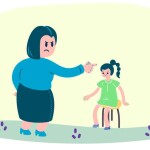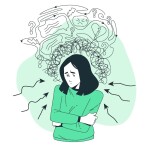Therapeutic Touch has made a significant mark in complementary and alternative therapies, specifically in healthcare settings where stress relief, pain management, and overall well-being are preferences. This gentle, energy-based practice supports recovery by working with the body’s natural energy field. While some people stay doubtful about its scientific support, many have found it to be a calming and transformative experience. So, let’s understand therapeutic touch, its principles, how it works, and the benefits it offers.
Introduction to Therapeutic Touch
Therapeutic Touch is an energy-based therapeutic modality in which a practitioner, using his or her hands, interacts with and affects a patient’s energy field to heal. The idea is that all living beings have an energy field that can become imbalanced through physical illness, psychological stress, or trauma. Therapeutic Touch aims to restore balance and harmony to this field, thus allowing the body to heal itself.
TT (Therapeutic Touch) was developed in the 1970s by Dolores Krieger, a professor of nursing, and Dora Kunz, a natural healer. They desired a method that would allow healthcare professionals to enable recovery through loving-touch care, even though the practitioner’s hands don’t physically touch the patient’s body.
Core Principles of Therapeutic Touch
There are some principles on which Therapeutic Touch is based:
Human Energy Field: The human body is supposed to release a light, invisible energy field far beyond the skin. Any deviations in this field are considered to cause disease and ailments. Therapeutic Touch is considered to balance out this energy field again.
Holistic Recovery: From the holistic recovery perspective, TT (Therapeutic Touch) considers the human being a whole system. Thus, it can heal the body, mind, and spirit by influencing the energy field.
Self-Healing Power: Based on the concept of the body's self-healing ability, TT interferes in the process by balancing and guiding the energy field.
Understanding Purpose: Another TT component is the therapist's compassionate intent. One is trained to believe that if a wish to heal is focused on, healing energy can be sent to the patient, and the body's natural healing mechanism can be activated.
How Therapeutic Touch Works: The Five Steps
The Therapeutic Touch process typically involves five steps. Each step is designed to scan, clear, and balance the patient's energy field.
Centering
Before the session, the practitioner focuses on his state of mind. It is called centering. Usually, meditation or deep breaths help relax the mind and be completely present. A practitioner must have a calm and focused state of mind to focus attention on the patient's energy entirely.
Scanning the Energy Field
The practitioner, now centered, uses his hands to scan the patient's energy field, usually a few inches above the body. In this stage, the practitioner could feel sensations in his hands like being warmed, cooled, or tingly; it is indicative that the energy is unbalanced or blocked in these areas.
As TT is a non-contact modality, practiced TT specialists are taught to look for disruptions in the energy field that could indicate locations of physical or emotional pain.
Clear Blocked Energy
If an imbalance is found, the practitioner will clear or unblock energy. The most common technique for this purpose is sweeping motions with the hands surrounding the patient's body. This is a process of removing stagnated or disordered energy that hinders the natural flow in the body.
This stage is similar to "clearing away the debris," which paves the way for new, healthy energy flow.
Balancing the Energy Field
After removing the blockages, the practitioner can start to balance and even out the patient's energy field. In this part of the treatment, the hands should move slower and more deliberately, with the goal of laying down an even flow of energy across the body.
In this final stage of the treatment, the practitioner is said to tap into healing energies that help the patient feel more harmonious and more at peace.
Evaluation and Grounding
The energy field will be balanced to ensure that all the elements are in line. The session will end with grounding, with the practitioner and patient focusing their attention on connecting with the earth. This ensures that the patient leaves balanced and in the present.
It also helps the patient avoid dizziness and a "floaty" feeling and allows them to integrate their session benefits into everyday life.
Benefits of Therapeutic Touch

Therapeutic Touch has many useful physical and emotional effects. Therefore, it is used widely in various healthcare and wellness facilities. Although its scientific measurements are very hard to decide, many patients and practitioners believe that TT helps the body's healing process in gentle and non-invasive ways. Some of the very commonly reported benefits include the following:
Reduce Stress and Anxiety
Most people need a Therapeutic Touch because it actually reduces stress, which is one of the main reasons many seek it. By soothing the body's energy field, TT calms the nervous system, resulting in deep peace. After the session, most patients report feeling lighter and more centered.
Relieves Pain
TT is also used therapeutically in the treatment of pain because it commonly relieves chronic pain, migraine, or postoperative pain. Many patients comment that TT decreases the intensity of their pain, so they can more easily cope without drugs.
Promotes Healing
TT practitioners aim to balance the body's energy field and, therefore, help improve its natural self-healing capabilities. Thus, TT is often used in combination with treatments meant for patients recovering from surgery, injury, or illness. It does not replace any standard treatments, but rather, TT supports the recovery process and tends to help patients recover better than they could under traditional treatment means.
Emotional Well-being
Therapeutic Touch (TT) is as much about emotional healing as it is about physical health. It can be used to relieve anxiety, depression, or emotional overload. It departs individuals feeling like they have had an emotional "cleansing," making them feel lighter and much easier on themselves.
Improves Sleep
Improving sleep calms the mind and many people use TT to help sleep-deprived individuals. Most recipients report sleeping better and feeling refreshed after a TT session.
Where Is Therapeutic Touch Used?
The Therapeutic Touch (TT) process is enforced in various places, such as hospitals and hospices, wellness centers, and home care. Nurses, holistic health practitioners, and healers often include TT in their patient care plans.
In Clinical Settings
Health and Human Services (HHS) clinics often use TT with patients who have chronic illness, pain, or anxiety. It is helpful for patients undergoing surgery, chemotherapy, or other medical interventions requiring physical and emotional endurance. A nurse with TT training can offer a gentle, nonintrusive source of comfort to such patients.
Soothing Care
TT is also heavily used in palliative care to help patients who are reaching the end of life establish comfort. When it is confirmed that a patient has reached the end of life, it helps to gently reduce pain, anxiety, and psychological difficulties. TT practitioners help create a peaceful environment, which can be smooth and effortless for both the patient and their loved ones.
Home Use
Some individuals learn the fundamentals of Therapeutic Touch for their use. Their motivation may be either self-care or facilitating family members' healing process. While formal training is required to become a practitioner, basic techniques like centering and grounding can be helpful in everyday life.
Scientific Perspectives and Criticism
While many are enthusiastic about Therapeutic Touch, it has also received criticism from scientific circles. There is insufficient strong evidence to prove that TT transcends the placebo effect. Most of the studies that defend TT are based on patients' reports and do not necessarily reflect a measurable change in health.
However, the concept of an energy field that may be manipulated is not widely accepted in conventional medicine. Yet, many still come for TT for its holistic value, and it remains very much in demand within integrative healthcare settings.
Conclusion
Therapeutic Touch offers a holistic, noninvasive healing modality with a gentle approach to restoring balance in the body's energy field. It may not be used as a full-time substitute for conventional medical therapy and procedures, but it can be very useful as a complement, reducing stress and managing pain without invasion. Whether you're facing a chronic illness, recovering from surgery, or simply seeking relief, TT might just be what you need.
Like any healing practice, a person should always approach TT with an open mind and go for health care professionals if one adds any results to the overall health plan.
Solh understands. We offer a variety of features to help you invest in self-care.
Journaling for Self-Reflection: Sometimes, being unable to care for yourself can come from a lack of self-understanding. Solh's journaling feature allows you to explore your thoughts and feelings in a safe space. By reflecting on your experiences and desires, you can clarify what stops you from self-care.
Anonymous Support Groups: You are not alone. Solh's anonymous support groups connect you with others who understand the struggle. Share your experiences, find comfort in solidarity, and discover new perspectives on overcoming the hurdle to indulge in self-care.
Solh Buddy: Feeling lost or disconnected? Your Solh Buddy, a personalized virtual companion, is here to provide encouragement and support. It can offer prompts, celebrate your victories, and remind you of your strengths as you navigate the journey toward self-care.
Talk now: Sometimes, self-care can make you feel overwhelmed. Solh's Talk Now feature gives you access to dedicated counselors who can help you navigate such situations.
Solh believes in a unique approach to introducing self-care. We empower you to take charge of your well-being by offering a variety of tools. Explore Solh today and discover the power of self-reflection, connection, and support in overcoming any problem of the mind. You are not alone on this path.








